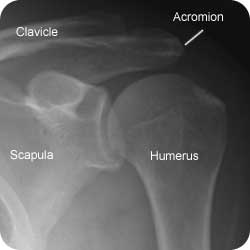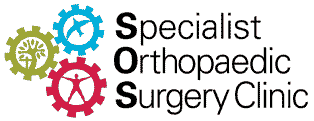Your guide to understanding shoulder pain and treatment options
What is the AC Joint?
The acromioclavicular (AC) joint is located at the top of your shoulder. It connects your collarbone (clavicle) to your shoulder blade (scapula). This joint allows movement when you raise your arm above your head.

What is AC Joint Arthritis?
AC joint arthritis happens when the cartilage in the joint wears out. This causes the bones to rub together, leading to pain and swelling. It is different from glenohumeral (main shoulder) arthritis, which affects the ball-and-socket part of the shoulder.
Common Symptoms
- Pain on top of the shoulder
- Aching or sharp pain during movement
- Discomfort at night, especially when lying on the affected side
- Pain when reaching across the body or lifting the arm overhead
What Causes It?
AC joint arthritis is usually caused by wear and tear over time. It can also be caused by:
- Previous shoulder injuries, like dislocation or fractures
- Repetitive overhead movements from work or sports
- Other shoulder problems like impingement or rotator cuff tears
Who is at Risk?
- People over 40 years old
- Those who have had previous shoulder injuries
- People with jobs or hobbies that involve lifting or overhead activity
How Is It Diagnosed?
Doctors usually diagnose AC joint arthritis using:
X-Ray
Shows narrowing of the joint space and bone changes.
MRI
Can detect additional problems like bursitis or rotator cuff tears.

Treatment Options
Non-Surgical Treatments
- Anti-inflammatory medications
- Physiotherapy to strengthen the shoulder
- Activity modification
- Cortisone injections (in some cases)
Surgical Treatment
If non-surgical methods don’t relieve the pain, a procedure called distal clavicle excision may be performed. This removes the end of the collarbone to reduce pain.
Arthroscopic Surgery
- Minimally invasive with small incisions
- Less than 1 cm of bone removed
- Usually a sling is worn for 2 weeks
- Full recovery typically takes 6–8 weeks
Recovery and Return to Work
Most patients with desk jobs return to work within a few days after surgery. Those with physical jobs may need up to 6 weeks of rest. Physiotherapy is often helpful in speeding up recovery and improving function.
Can It Be Prevented?
You may not be able to fully prevent AC joint arthritis, but you can lower your risk by:
- Avoiding repetitive overhead movements
- Protecting your shoulder from injury
- Maintaining shoulder strength and flexibility with regular exercise
When to See a Doctor
If you have persistent shoulder pain, especially on the top of your shoulder, it’s best to talk to your GP. They can:
- Diagnose the problem
- Recommend treatment options
- Refer you to a shoulder specialist if needed
Helpful Resources
